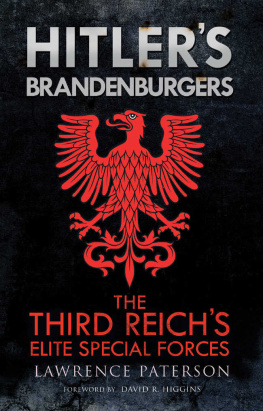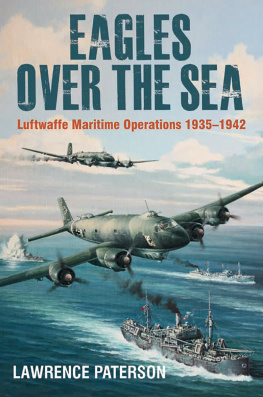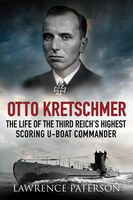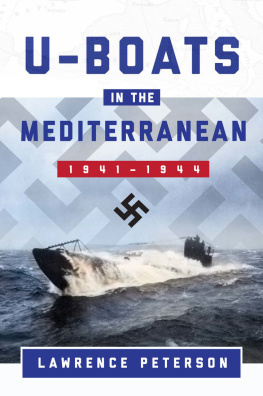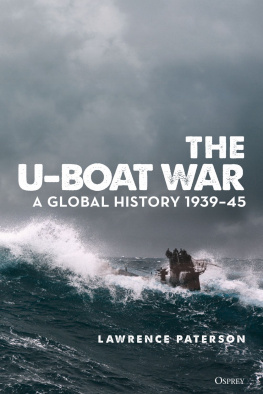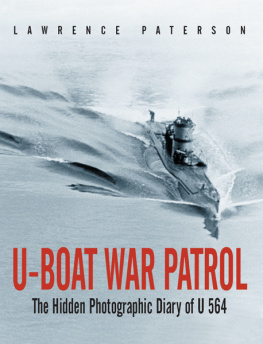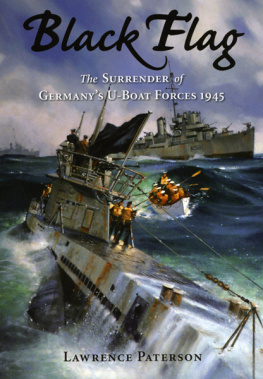
Contents
The U-boat war that raged between 1939 and 1945 has been a subject of intensive study almost since the end of hostilities. The famously titled Battle of the Atlantic is seen as one of the seminal campaigns upon which hinged the Western Allies attempt to defeat Nazi Germany. While the actual effectiveness of Grossadmiral Karl Dnitzs U-boats within the Atlantic remains debated to this day, there is no denying that the U-boats primary directive was the sinking of Allied merchant ships a so-called tonnage war in which Germany attempted to outpace the available collective transport power of the Allied mercantile convoys by destroying ships. It was a matter of simple maths: if more shipping tonnage could be sunk than was required to keep Great Britain functioning, then Germany would prevail.
However, there were other arenas of U-boat combat. These have gone largely ignored: seen as peripheral to the primary Atlantic battle, even by Dnitz himself. Among these forgotten campaigns are the ones fought at sea against the Soviet Union.
There were three primary areas in which U-boats were pitched into combat against Russia: the Baltic Sea, Black Sea and Arctic Ocean. The latter has gone down in history as the U-boat campaign against the Arctic convoys, though Hitlers perpetual fear of Anglo-American landings in Norway also kept the Kriegsmarine pinned to the area for the task of invasion defence; something to which U-boats were completely unsuited. These western convoys provided the Soviet Union with the weapons and material needed to keep the nation battling against the Axis invasion, Operation Barbarossa, in June 1941. Statistical history shows us that the actual Soviet import of materials through the Arctic route was far from a deciding factor in the Red Armys ability to eventually prevail over the Wehrmacht ; but nor was it insignificant. Moreover, the terrible conditions endured by those people of all nations that fought through an incredibly inhospitable geographical area deserve immediate recognition as an example of both human tragedy and triumph. Although not strictly a battle fought against the Russians the majority of Allied combatants being western merchants and warships it was a war fought by U-boats in direct support of Axis forces fighting within the expanse of the Soviet Union and so I regard it as a battle against the Russians, as much as it was against other Allied nations.
The Baltic Sea provided a corridor from Germany into Soviet satellite states such as Estonia, Latvia and Lithuania as well as deep into the Soviet Union itself. Oddly, it was never fully utilised by either side during the years of war; the Russian Baltic fleet vastly outnumbered their opponents and the Kriegsmarine failed to grasp the potential strategic advantage provided by sea-lanes that could have allowed direct attack behind a fiercely contested frontline. This was a U-boat war primarily fought against warships: generally small vessels used for patrolling and minelaying.
So too was the campaign within the Black Sea. The Kriegsmarine was employed in direct support of the forces ashore, probably the clearest example of U-boats used to influence fighting on land. Although tasked with the interdiction of military vessels, the six small boats despatched to fight off the Caucasian and Crimean coast were initially envisioned as able to stop the supply and reinforcement convoys needed for the Red Army.
Peripheral theatres of action they may have been, but the bitter battles fought in the blazing heat of a Crimean summer and the darkness and ferocious cold of Arctic winter remain among the fiercest conducted by Dnitzs Grey Wolves. This is their story.
German | Russian | British/American |
Grossadmiral | Admiral of the Fleet/Fleet Admiral |
Admiral | Flagman Flota 2 ranga | Admiral |
Vizeadmiral (VA) | Flagman 1 ranga | Vice Admiral |
Konteradmiral (KA) | Flagman 2 ranga | Rear Admiral |
Kapitn zur See (KzS) | Kapitan 1 ranga | Captain |
Fregattenkapitn (FK) | Commander |
Korvettenkapitn (KK) | Kapitan 2 ranga | Commander |
Kapitnleutnant (Kaptlt) | Kapitan 3 ranga | Lt Commander |
Oberleutnant zur See (ObltzS) | Kapitan-Leytenant | Lieutenant |
Oberleutnant der Reserve (ObltdR) | Lieutenant of the Reserve |
Leutnant zur See (LzS) | Leytenant | Sub Lieutenant / Lieutenant (jg) |
Fhnrich | Midshipman / Ensign |
Stabsobersteuermann | Senior Quartermaster / Warrant Quartermaster |
Obermaschinist | Senior Machinist / Warrant Machinist |
Bootsmann | Boatswain |
Oberbootsmannsmaat | Boatswains Mate Second Class |
Bootsmannsmaat | Coxswain |
Mechanikermaat | Torpedo Petty Officer |
-Maat (The mans trade inserted at dash) | Petty Officer |
Maschinenobergefreiter | Leading Seaman Machinist |
Funkobergefreiter | Leading Seaman Telegraphist |
Matrosenobergefreiter | Leading Seaman |
Maschinengefreiter | Able Seaman Machinist |
Matrosengefreiter | Able Seaman |
ASDIC | Term applied to the sonar equipment used for locating submerged submarines. A powerful and effective weapon, it emitted a distinct ping when locating the target. ASDIC is an acronym for Anti-Submarine Detection Investigation Committee, the organisation that began research into this device in 1917. |
BdU | (German) Befehlshaber der Unterseeboote ; commander of U-boats. |
Eel | (German) aal ; Slang expression for torpedo. |
Enigma | (German) Coding machine used by German Armed Forces throughout the Second World War. |
FdU | (German) Fhrer der Unterseeboote ; flag officer for submarines, responsible for a particular geographical region. |
G7a | German torpedo propelled by compressed air. |
G7e | German torpedo propelled by electric motor. |
GRT | Gross Registered Tonnage (one ton equals 100 cu ft cargo capacity), a standard way of judging merchant shipping size. |
HMS | His Majesys Ship (Royal Navy). |
HMT | His Majestys Trawler (Royal Navy). |
Ing . | (German) Ingenieur , engineering trade, eg. Kaptlt ( Ing. ). |
Kriegsmarine | (German) Navy of the Third Reich. |
KTB | (German) Kriegstagebuch ; War Diary. Kept by the commander during a U-boats patrol, and later entered into official records. |
LI | (German) Leitendre Ingenieur , chief engineer. |
Next page

